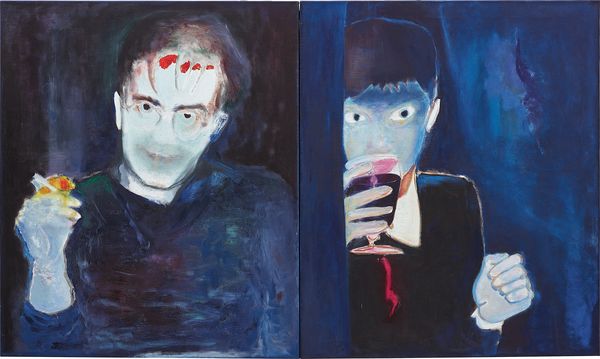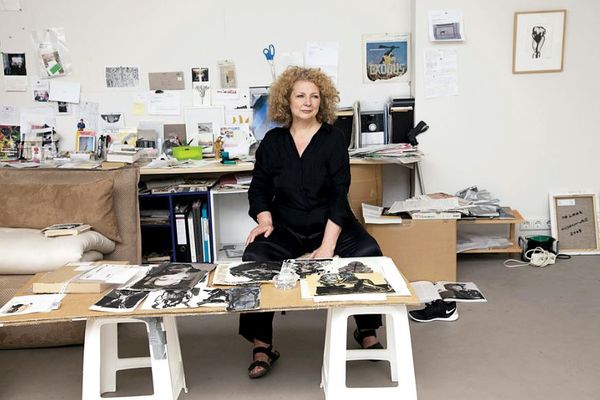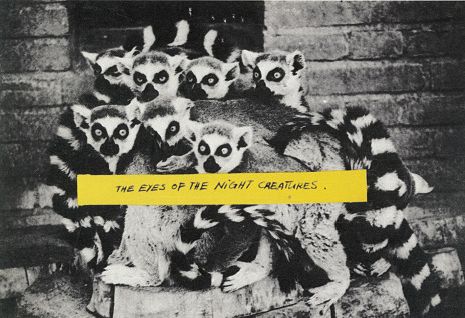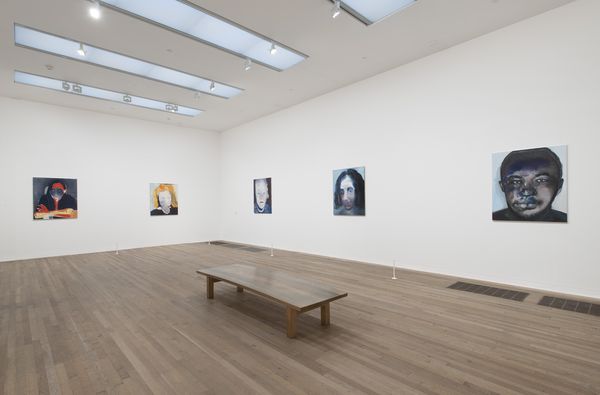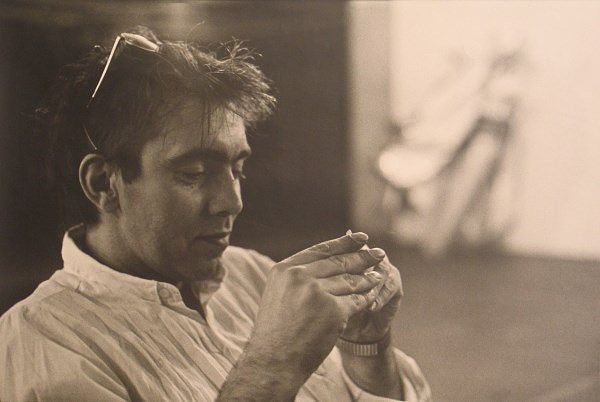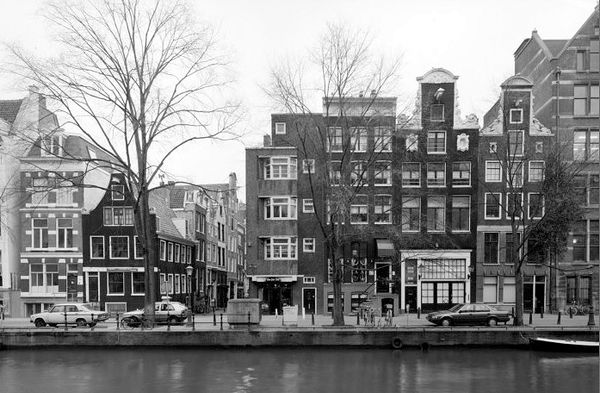Marlene Dumas De gele vingers van de kunstenaar [The yellow fingers of the artist], 1985
With recent mid-career retrospectives at the Stedelijk Museum, Amsterdam, Tate Modern, London, and Fondation Beyeler, Basel, Marlene Dumas is widely celebrated as one of the most influential painters working today. Our upcoming Evening Sale highlight, De gele vingers van de kunstenaar, 1985, encapsulates the very breakthrough moment in Dumas' career in the mid-1980s.
Dumas in her studio, 2014. Credit: Jackie Nickerson
By the time Dumas created De gele vingers van de kunstenaar, she had already begun to establish herself as a promising young artist. Born in Cape Town, South Africa, in 1953, she had moved to the Netherlands to study at the independent art school Ateliers '63 in Haarlem, near Amsterdam, from 1976 to 1978. Founded in 1963, the institute is now known as De Ateliers and located in Amsterdam. In 1978, at merely 25 years of age, Dumas exhibited her work for the first time as part of the group exhibition Atelier 15 (10 Young Artists) at the Stedelijk Museum in Amsterdam and in 1982 participated in Documenta 7.
Painted in 1985, De gele vingers van de kunstenaar belongs to the breakthrough body of work The Eyes of the Night Creatures that Dumas created after a five-year hiatus from painting, during which time she had primarily created works on paper. While her drawings oeuvre had been already been subject to her first museum solo exhibition at the Centraal Museum Utrecht in 1984, the debut of this series at Galerie Paul Andriesse in Amsterdam in 1985 marked the triumphant return to painting and figuration in Dumas' practice and signaled the emergence of what would become one of the most daring and influential figurative contemporary painters.
Invitation for Galerie Paul Andriesse, Marlene Dumas, The Eyes of the Night Creatures, 1985
Many of the works from the series now reside in public collections, including the Stedelijk Museum, Amsterdam, the Van Abbemuseum, Eindhoven, the Museum voor Moderne Kunst, Arnhem, the Art Institute of Chicago and the Centraal Museum Utrecht.
Installation view of The Eyes of the Night Creatures series in Marlene Dumas, Image as Burden, Tate Modern, London, 2015
It is important to remember that the art world in Amsterdam at the time was very small, with only two major contemporary art galleries and many of the artists, gallerists, critics and curators knowing each other very well. Recalling the great lineage of French Impressionist bourgeois café scenes, De gele vingers van de kunstenaar captures a late night art world gathering of friends that smoke, drink and talk.
The diptych is indeed based on photographs that Dumas took during nights out with her friends in Amsterdam. On the left, eminent artist and close friend René Daniëls is depicted holding a cigarette with yellow fingers, evocative of fresh paint, but also the staining that occurs from extensive smoking — hence the corresponding title.
De gele vingers van de kunstenaar speaks to a particular moment in time in which Dumas and René Daniëls were on the rise as the most promising young painters in the Netherlands. While Dumas and Daniëls did not overlap in their studies at Ateliers '63, they had notably been included in the 1978 Stedelijk Museum group exhibition Atelier 15 (10 Young Artists).
René Daniëls, photographed by Paul Andriesse, 1983
At the time of Dumas' breakthrough 1985 exhibition, Daniëls had already established himself internationally: heralded by critics as the "Top Young Dutchman," his work had been included in exhibitions at the Kunsthalle Bern, the Stedelijk Museum and Documenta. In 1984, he received his first U.S. solo exhibition at Metro Pictures in New York. With De gele vingers van de kunstenaar, Dumas pays tribute to her friend, confidante and fellow artist, who, just two years later in 1987, suffered a brain aneurysm and has been unable to produce new work since.
The figure on the right shown drinking a glass of red wine depicts the gallery assistant at Galerie Paul Andriesse at the time. Established by Paul Andriesse in Amsterdam in 1984 when he took over the Galerie Helen van der Meij, which represented artists such as Sigmar Polke, Markus Lüpertz and Anselm Kiefer, the gallery notably fostered the careers René Daniëls and Erik Andriesse, Paul's brother, alongside that of Marlene Dumas.
Amsterdam, 1980s
Rendered in delicate veils of translucent paint and sumptuous impasto, De gele vingers van de kunstenaar is a deeply personal homage to the unique spirit of comradery that distinguished the close-knit art world community in Amsterdam in the 1980s.
